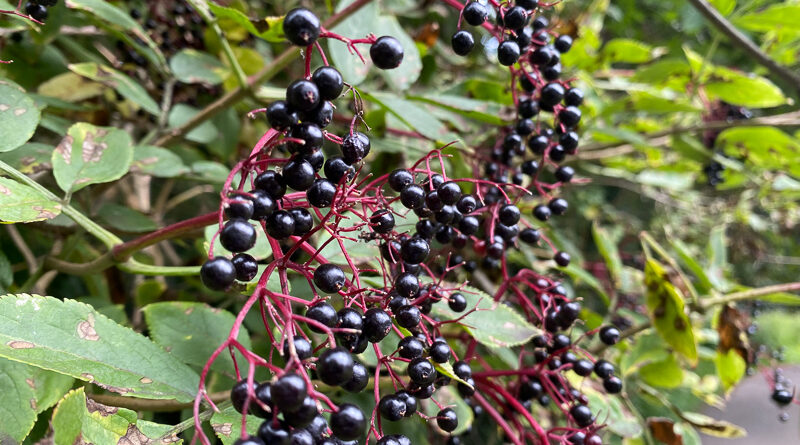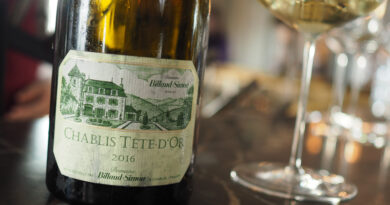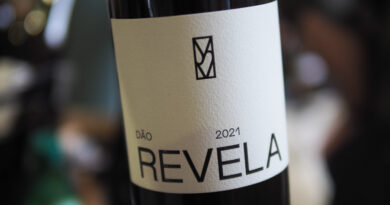The elderberry bag: an interesting chapter in the history of Port
Port has had a really interesting history. Quite naturally, this is tied into the history of the Douro, but Port wine as we know it – a fortified wine – is a relative newcomer, dating back just to the 18th century. [Grapes were first recorded in the region in the 13th century.] And even into the mid-19th century, there was still a lot of debate about the use of fortification. No less an authority than Joseph James Forrester was opposed to it, and wrote a short anonymous pamphlet in the 1840s where, among other issues, he decried fortification, along with other additions that were sometimes made to the wines.
Port as we know it, fortified while fermentation was still in progress to create a sweet wine, was first recorded in 1678. The Abbot of Lamego is reported to have added brandy during fermentation.
One of the most intriguing stories, however, is the role of the elderberry bag. Richard Mayson in his book on Port and the Douro describes the use of the baga do sabuguerio, which was widely used to enhance the colour of Port. Mason reports that the elderberries were harvested in August and then dried and stored until September. He says that these were then placed in the corner of a lagar, and one of the treaders was asked to pay attention to it, making sure that the berries were hydrated and then trodden to release their intense colour to the wine.
The use of the baga began in the early 1700s, and at this time there was quite a bit of adulteration of Port wines. They were proving a commercial success, and were stretched by the addition of non-Douro wines, as well as a host of enhancing ingredients – including elderberries. By 1750 a slump in trade led to a huge fall in prices and a crisis in the region. There was a stand-off between the English Port traders and the growers.
In stepped Sebastião José de Carvalho e Melo, better known as the Marques de Pombal. Prime minister of Portugal, and a bit of an autocrat, he did two things. First, he formed a state-owned co-op, the Real Companhia das Vinhas do Alto Douro. This was granted the ability to fix prices, tax, and distribute all wines for export. He also demarcated the Douro wine region. This began in 1756 (and it’s the earliest wine region to be geographically delineated in this way), but it took until 1761 for it to come into force.
He also did one other thing: noting that elderberry bags were a frequent manipulation of Port wine, he ordered all the elderberry bushes in the region to be removed. But this was not the end of the elderberry bag.
James Forrester, in the mid-19th century, noted that among other adulterations, dried elderberries were used to colour pipes of wines. So this practice was still ongoing.
In an article from 1844, I found the following information about the way that elderberries were being used. Two months after fortification, a quantity of dried elderberries are put into coarse bags, which are then placed in vats. Then the wine to be coloured is placed over them. Foot treading extracts the colour. 28-56 pounds (13-26 kg) of elderberries are used per pipe (c. 550 litres). After this, more brandy is added and the Port is sent to Oporto after two months rest. And then more brandy would be added before shipping. [This was in an article in The Magazine of Science and School of Arts, vol 5.]
Between 1820 and 1840, the amount of brandy used to fortify Port changed quite a bit, from around 20 litres per pipe, to 100 litres. An article from 1873 by JL Thudichum said that the minimum brandy was added, and at different times, with the last dose before shipping. This was because brandy was expensive, and so the less added the more profitable the wine. He says that some Jeropiga (grape must) might also be added to increase sweetness, and some elderberry may be added now and then.
But Thudichum wrote a book in 1896, in which he stated this:
“It is said that port wine is coloured with elderberries and other dyes, and sweetened with jeropiga and treacle, besides being dosed with brandy; but I have been unable to find any evidence of this, at least as regards Alto Douro wines. Elder trees are very scarce in the Alto Douro, and I can in this respect fully confirm the statement of Mr. Consul Crawford. Moreover, the Alto Douro wine, of a good year at least, is so deeply coloured, in fact, so excessively loaded with colouring matter, that it cannot by any means require any addition of colour; the elderberries exported from Oporto are really used for colouring other wines than port wine, particularly the Spanish ports, Mountain ports, Cape ports, and Sicilian red wines which are carried to England, and thence exported to countries where people buy wine rather by the name it bears than by any quality it possesses.”
[A Treatise on Wines, Their Origin, Nature and Varieties, George Bell and Sons, London, 1896.]
So it seems that elderberries were part of Port production for some time, but rather than being added to the lagar, their primary use may have been in Oporto (the Port lodges were mainly based here before they switched to Vila Nova de Gaia where they now exist, over the river) in doctoring the lighter pipes of Port that could have done with a bit more colour. No doubt some were added to the lagar, and some may have been added post fermentation and fortification in the Douro before the river transport to Oporto.
Overall, though, modern Port wine took a while to evolve. Now, fortification takes place in one hit, whereas in the past there were varying degrees, and the brandy addition may have taken place in a number of hits, including one before shipping. It’s a fascinating story.
Is the use of elderberries still ongoing? I was told a few years back by a winegrower that elderberries were fetching higher prices than Touriga Nacional grapes. It would be fascinating to see what effect they might have. Another grower told me that although they might add a lot of colour to a young wine, the colour so derived would oxidise fast and take on a brown hue.
I suspect that elderberries are used no more in Port production. It’s illegal, and anyone doing it would get into a lot of trouble if they were caught. But as an academic exercise, it might be interesting to try to recreate some of these Ports of the past, when all manner of additions managed to sneak through. Merely as an academic exercise, though: Port now is better than ever, and even the cheap categories, such as reserve ruby, deliver an awful lot of pleasure and character at affordable prices.




